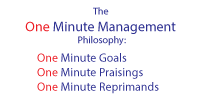Author: Peter Thiel / Blake Masters
Format: Audible
Subject: Entrepreneurship
Rating: 10/10
Summary:
Zero to One is easily the most interesting book that I have read in the past several years. And, that is saying a lot since I was initially very skeptical about including it on my reading list. The book held my attention from beginning to end. Thiel’s covers a variety of topics that are designed to get the reader thinking. At its core, Zero to One, is essentially a book of ideas. And many of those ideas challenge the status quo.
Blake Masters narrated the Audible version of the book. His dictation style has a nice flow to it. Other narrators could learn a thing or two from him.
Zero to One vs Zero to N:
- Zero to One: is vertical progress. New technologies. It creates something where nothing existed before.
- Zero to N: is horizontal progress. It is the act of iterating over existing technology.
Thiel’s Core Beliefs:
- Globalization is doomed without technological innovation
- Capitalism is the opposite of competition
- We can shape our core future
Lessons Learned from Dot.com Bubble vs Thiel’s Viewpoint:
 ?
?
Creating a Monopoly:
- Must be a order of magnitude better than the next option (10x)
- Target a small group of particular people concentrated together and served by few or no competitors
- Once you dominate the niche market then expand to adjacent markets
- Don’t disrupt
- Avoid first mover advantage; target making the last great development in a specific market and reap the rewards of a mature ecosystem.
- Founders should know each other very well before starting the company.
- Everyone should work in the same physical space. (No telecommuting.)
- Everyone should be a full-time employee.
- Lower CEO pay increases the chances for the start-up to succeed.
- Advertising Works
Maintaining a Monopoly:
- Create Network Effects: the more people using your product, the greater the network effects are.
- Economy of Scale: Lowers production and distribution costs
- Branding: Increases awareness.
Theil’s Seven Questions All Businesses Should Answer:
- Engineering – Can you create a breakthrough technology instead of incremental improvements?
- Timing – is now the right time to start your particular business?
- Monopoly – are you starting with a big share of a small market?
- People – Do you have the right team?
- Distribution – Do you have a way to not just create but deliver your product?
- Durability – Will your market position be defensible ten or twenty years into the future?
- Secret – have you identified a unique opportunity that others don’t see?
Sales people compared to their products:
- Advertising -> Account Executive
- Customers -> Business Developer
- Companies -> Investment Bankers
- Yourself -> Politicians.
Theil’s Favorite Interview Question:
“What important truth do very few people agree with you on?”
- Causes people to reflect on self-created knowledge.
- To become socially unpopular by taking a different stance.
- Rationale: brilliant thinking is rare but courage is in even shorter supply than genius.
Other Ideas:
- Entrepreneurs should create monopolies
- Competition lowers price and eliminates profit.
- Capitalism generates profit.
- Even a bad plan is better than no plan.
- School and College prepares you to be average at a lot of things. And an expert at nothing.
- Success is not a matter of luck.
- If you cannot beat your rival it may be better to merge with them (Paypal: Thiel and x.com: Musk)

